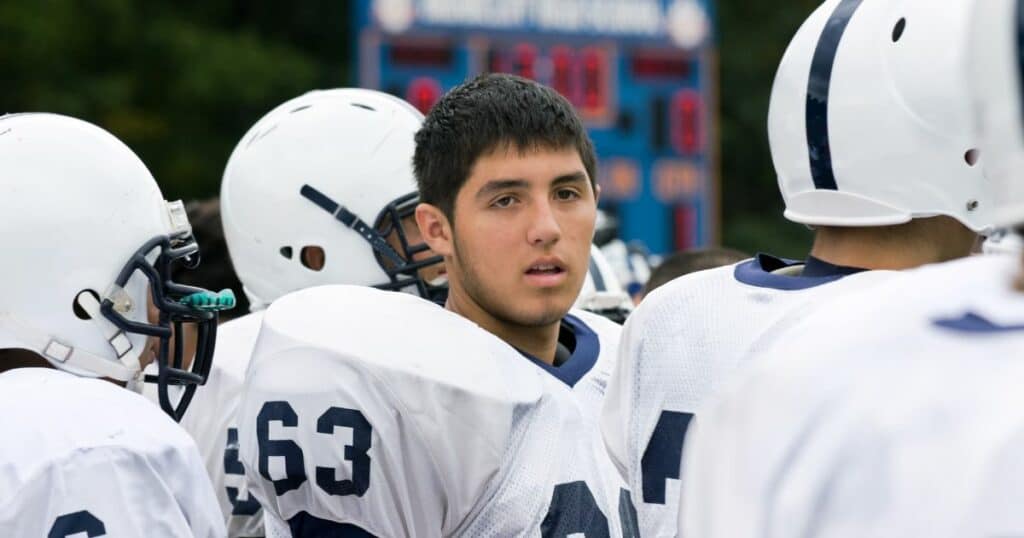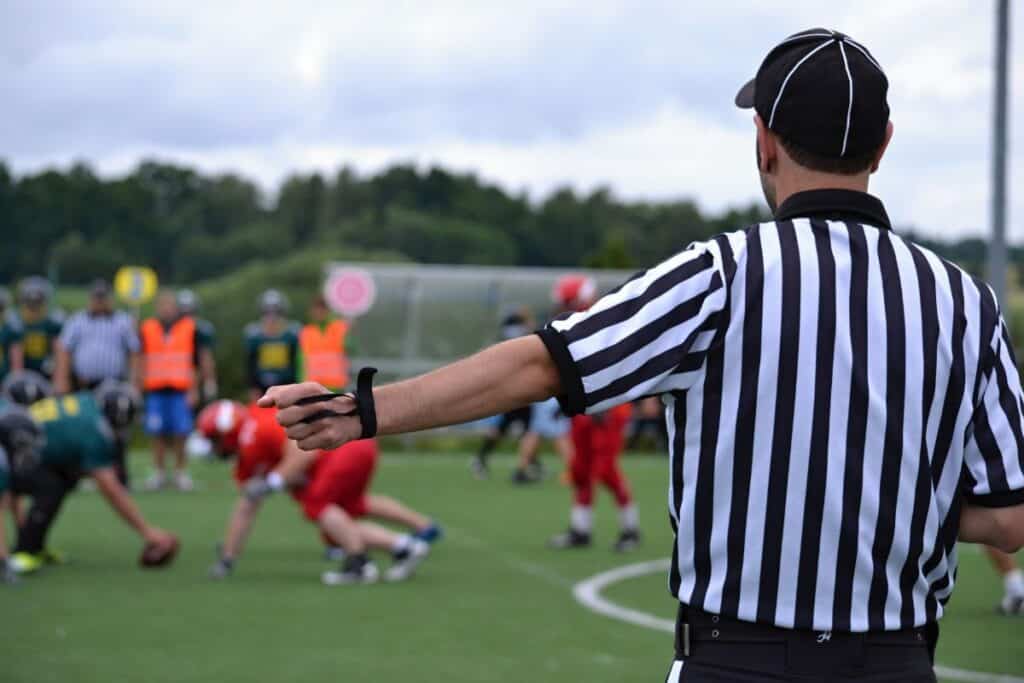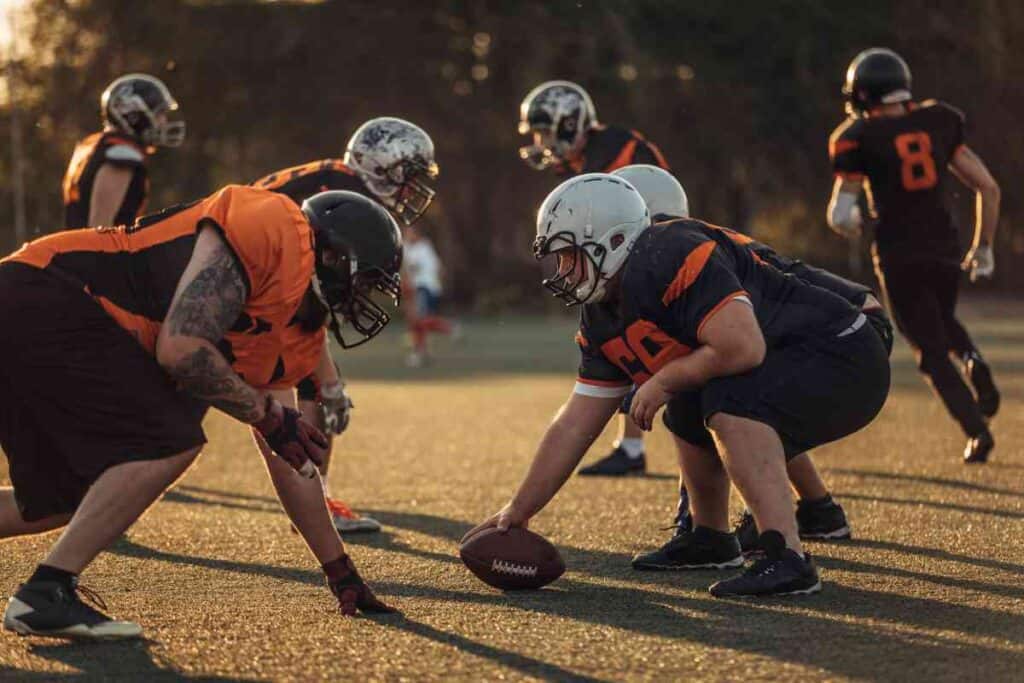How Long Do High School Football Games Last? A Comprehensive Guide.
High school football games are a major part of the American high school experience. For many students, playing on the football team is a rite of passage, and attending games is a beloved tradition. But just how long do these games typically last? The answer can vary depending on a number of factors.

Discover the answer to the burning question, “How long do football games last?” in our latest blog post, where we explore the topic using real-life examples, insights, and lessons learned from playing the sport.
At the high school level, football games generally last between two and three hours. This includes pre-game activities, such as warm-ups and the national anthem, as well as halftime performances.
However, there are a number of factors that can impact the length of a game, including weather delays, injuries, and penalties. In some cases, games may be extended into overtime if the score is tied at the end of regulation.
Regulation Game Length
High school football games have a set game length that is followed by all teams. The regulation game length consists of four quarters, each lasting for 12 minutes. The time is kept by the official game clock, which starts running as soon as the ball is kicked off to start the game.
Quarter Length
Each quarter is 12 minutes long, and there are four quarters in a regulation game. The clock stops for certain events such as incomplete passes, penalties, and out of bounds plays. However, the clock will continue to run for most other events, including first downs and completed passes that stay in bounds.
Halftime
After the second quarter, there is a halftime break. Halftime is typically 15 minutes long, but it can be shorter if both teams agree to it. During halftime, the teams will go to their respective locker rooms to discuss strategy and make any necessary adjustments.
Timeouts
Each team is allowed three timeouts per half, which can be used for any reason. Timeouts can be used to stop the clock, give players a rest, or to discuss strategy. However, if a team has used all of their timeouts, they cannot call any more until the next half.
In conclusion, a regulation high school football game lasts for four quarters, each lasting for 12 minutes. The game clock stops for certain events, but it will continue to run for most other events. Halftime is typically 15 minutes long, and each team is allowed three timeouts per half.

Overtime and Tiebreakers
In high school football, overtime occurs when the score is tied at the end of regulation play. Overtime rules vary depending on the state or district, but the most common format is the Kansas Plan.
Overtime Rules
In the Kansas Plan, each team gets a chance to score from the opponent’s 10-yard line. The team with the most points at the end of the overtime period wins the game. If the score is still tied after the first overtime, the teams continue to play additional overtime periods until a winner is determined.
During overtime, the coin toss is crucial. The team that wins the coin toss can choose to either play offense or defense first. If the team on offense scores a touchdown, they can either kick an extra point or go for two points. If they fail to score, the other team has a chance to win the game by scoring a touchdown or field goal.
If the score remains tied after the first overtime period, the game enters sudden death. In sudden death, the first team to score wins the game. If a team scores a touchdown on their possession, they win the game. If they score a field goal, the other team has a chance to score on their possession. If the other team scores a touchdown, they win the game. If they score a field goal, the game continues until there is a winner.
In the event of a turnover during overtime, the opposing team gains possession of the ball. This means that if a team throws an interception or fumbles the ball, the other team gets the ball and a chance to score.
Overall, overtime and tiebreakers in high school football can be exciting and nerve-wracking. The Kansas Plan is a popular format for overtime, but it’s important to check the rules in your state or district to know what to expect.
Penalties and Referees
High school football games are governed by strict rules and regulations that are enforced by referees. Penalties are a common occurrence in football games and can result in significant yardage losses or even disqualification of players. Referees are responsible for ensuring that the game is played fairly and that all rules are followed.
Common Penalties
There are numerous penalties that can be called during a high school football game. Some of the most common penalties include:
- Offside: When a player crosses the line of scrimmage before the ball is snapped.
- Holding: When a player uses their hands to prevent an opponent from moving.
- Pass interference: When a player interferes with an opposing player’s ability to catch a pass.
- Personal foul: When a player engages in unsportsmanlike conduct such as roughing the passer or unnecessary roughness.
- Delay of game: When a team takes too long to snap the ball.
Each penalty carries a specific yardage loss and can have a significant impact on the outcome of the game.
Referee Signals
Referees use a variety of hand signals to indicate penalties, timeouts, and other important game events. Some of the most common signals include:
- Touchdown: The referee raises their arms above their head.
- First down: The referee extends their arm in the direction of the team with possession of the ball.
- Penalty: The referee throws a yellow flag onto the field.
- Timeout: The referee forms a “T” with their hands.
It is important for players, coaches, and fans to understand these signals in order to follow the game and understand what is happening on the field.
Penalties and referees play a crucial role in high school football games. It is important for all players and fans to understand the rules and regulations of the game in order to ensure fair play and a safe environment for all participants.

Injuries and Safety
Football is a contact sport, and injuries are an inevitable part of the game. High school football players are at risk of sustaining various injuries, including concussions, broken bones, sprains, and strains. It is important to take steps to minimize the risk of injuries and ensure the safety of players.
Concussions
Concussions are a type of traumatic brain injury that can occur when a player’s head hits an object or when a player’s body is hit, causing the brain to move inside the skull.
Symptoms of a concussion can include headaches, dizziness, confusion, and loss of consciousness. If a player is suspected of having a concussion, they should be immediately removed from the game and evaluated by a medical professional.
To prevent concussions, players should wear properly fitting helmets and follow proper tackling techniques. Coaches should also ensure that players are not returning to the game too soon after sustaining a concussion.
Mercy Rule
In some states, high school football games may have a mercy rule in place. The mercy rule allows for the game to be stopped if one team is winning by a certain amount of points, typically 35 or more. This is done to prevent further injuries to players and to avoid running up the score.
The mercy rule can also help to prevent players from becoming discouraged and losing their motivation to play. When a team is losing by a large margin, players may become demoralized and lose their focus, which can increase the risk of injuries.
Overall, injuries are a significant concern in high school football. Coaches, players, and parents must work together to ensure that proper safety measures are in place to minimize the risk of injuries. By taking steps to prevent injuries, high school football can remain a safe and enjoyable sport for all involved.
Halftime Entertainment
High school football games are not just about the game itself, but also about the halftime entertainment. The halftime break provides an opportunity for the audience to relax, stretch their legs, and enjoy a variety of performances.
Halftime Show
Halftime shows are a popular form of entertainment at high school football games. They often feature dance performances, cheerleading routines, and other forms of entertainment.
The performers are usually students from the school or local dance studios. The halftime show is a great way to showcase the talent and creativity of the students.
Marching Bands
Marching bands are a staple of halftime entertainment at high school football games. These bands are usually made up of students from the school and are led by a drum major.
The bands perform a variety of music and often incorporate dance and choreography into their performances. The halftime performance is a great way to showcase the hard work and dedication of the band members.
Competitions
Some high school football games feature halftime competitions. These competitions can include dance-offs, cheerleading competitions, and other forms of entertainment. The competitions are a great way to get the audience involved and engaged in the halftime entertainment.
In conclusion, halftime entertainment is an important part of the high school football experience. Whether it’s a halftime show, marching band performance, or competition, the entertainment provides an opportunity for the students to showcase their talents and for the audience to enjoy a variety of performances.
Youth and Lower Level Football
When it comes to youth and lower level football, games tend to be shorter than high school games. However, the exact length of these games can vary depending on the level of play.
Junior High Football
Junior high football games typically last around two hours, including halftime. Each quarter is typically around 12 minutes long, with a halftime break of around 10-15 minutes. However, these times can vary depending on the specific league or state regulations.
Flag Football
Flag football is a popular alternative to tackle football for younger players. Games typically last around an hour, including halftime. Each half is usually around 20-25 minutes long, with a halftime break of around 5-10 minutes.
Lower level football games, including pee-wee and Pop Warner leagues, can also vary in length. Some leagues may have shorter quarters or halftime breaks to accommodate for younger players’ attention spans and endurance.
Overall, youth and lower level football games tend to be shorter than high school games, but the exact length can vary depending on the level of play and league regulations.
| Level of Play | Length of Game |
|---|---|
| Junior High | 2 hours |
| Flag Football | 1 hour |
| Lower Level | Varies |
It’s important to note that youth football leagues often prioritize safety and development over winning, and may have different rules and regulations in place to reflect this.
Other Football Variants
Football is a sport that has evolved over time and has different variations in different countries. Here are some of the other football variants:
Canadian Football
Canadian Football is a variant of American Football played in Canada. It has some differences from American Football, such as:
- The field is 110 yards long and 65 yards wide
- Teams have 12 players on the field instead of 11
- The end zones are 20 yards deep instead of 10 yards
- The goalposts are located at the front of the end zone instead of the back
In Canadian Football, the game lasts for 60 minutes, divided into four 15-minute quarters. The clock stops after every play, which makes the game longer than American Football.
College and Professional Football
College Games
College football games typically last longer than high school games due to the higher level of competition and the increased number of plays. The average length of a college football game is around 3 hours and 24 minutes, with some games lasting up to 4 hours or more.
The length of college games can be affected by factors such as the number of penalties, the number of reviews, and the number of timeouts taken by each team.
In college football, the clock stops after every first down, which can lead to more stoppages in play and longer games. Additionally, college football has a shorter play clock than the NFL, which can lead to more plays being run and longer games overall.
NFL Games
NFL games are typically shorter than college games, with the average length of a game being around 3 hours and 12 minutes. The length of NFL games can be affected by factors such as the number of penalties, the number of reviews, and the number of timeouts taken by each team.
In the NFL, the clock stops after every incomplete pass, which can lead to fewer stoppages in play and shorter games. Additionally, the NFL has a longer play clock than college football, which can lead to fewer plays being run and shorter games overall.
Overall, the length of professional or college football games can vary depending on a variety of factors, including the level of competition, the number of penalties, the number of reviews, and the number of timeouts taken by each team.
Recommended Reading
Conclusion
In conclusion, the length of high school football games can vary depending on several factors. Varsity football games typically last longer than junior varsity games, with an average playing time of around two hours. However, homecoming games may involve more festivities and longer halftime shows, which can extend the length of the game.
During the game, commercials and other breaks may also add to the overall length of the game. In addition, two-point conversions and defensive stops can also impact the length of the game.
The length of high school football games can also vary based on location. For example, in Florida, high school football games are played in four quarters of 12 minutes each, while in Wisconsin, games are played in four quarters of 10 minutes each.
It is important to note that the actual playing time during a high school football game is typically much less than the total length of the game. According to the US Youth Soccer Association, the average actual playing time during a high school football game is around 12 minutes per quarter.
The longest high school football game on record lasted for seven overtimes, with a total playing time of over four hours. However, this is a rare occurrence and most high school football games will be completed within a few hours.
Overall, the length of a high school football game can vary based on a variety of factors, including the level of play, location, and game events. However, most games will be completed within a few hours and provide an exciting and competitive experience for players and spectators alike.
